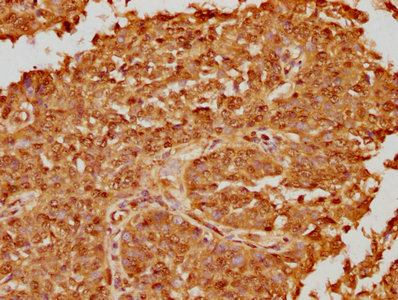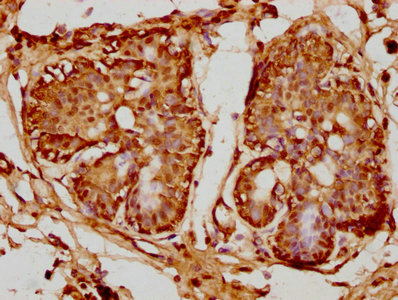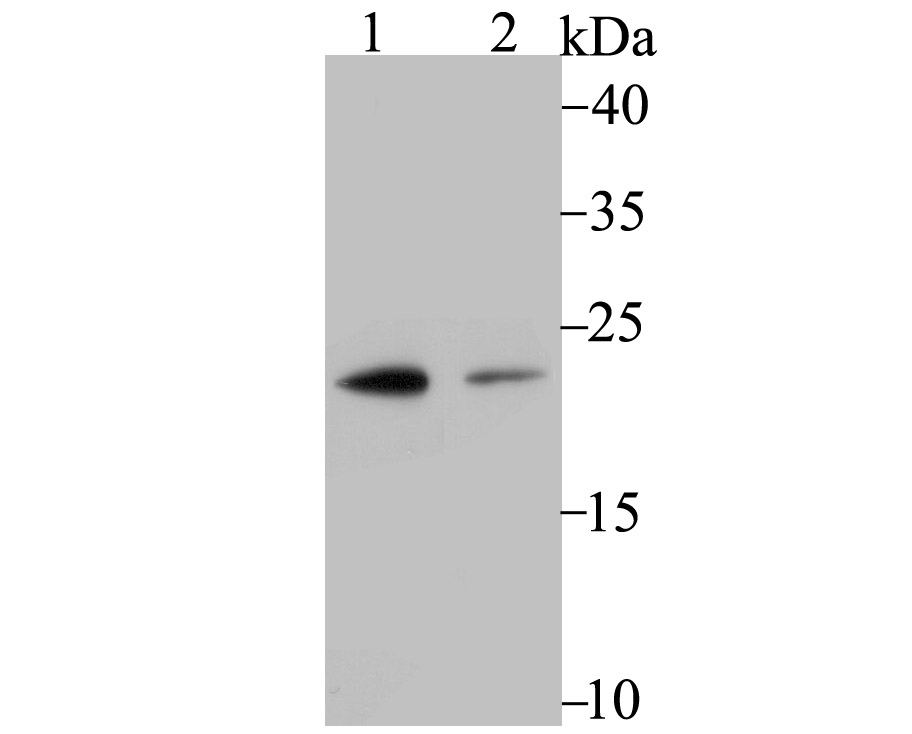
IHC image of CSB-PA018886LA01HU diluted at 1:100 and staining in paraffin-embedded human cervical cancer performed on a Leica BondTM system. After dewaxing and hydration, antigen retrieval was mediated by high pressure in a citrate buffer (pH 6.0). Section was blocked with 10% normal goat serum 30min at RT. Then primary antibody (1% BSA) was incubated at 4°C overnight. The primary is detected by a biotinylated secondary antibody and visualized using an HRP conjugated SP system.
PSMB8 Antibody
CSB-PA018886LA01HU
ApplicationsELISA, ImmunoHistoChemistry
Product group Antibodies
ReactivityHuman
TargetPSMB8
Overview
- SupplierCusabio
- Product NamePSMB8 Antibody
- Delivery Days Customer20
- ApplicationsELISA, ImmunoHistoChemistry
- CertificationResearch Use Only
- ClonalityPolyclonal
- ConjugateUnconjugated
- Gene ID5696
- Target namePSMB8
- Target descriptionproteasome 20S subunit beta 8
- Target synonymsALDD, D6S216, D6S216E, JMP, LMP7, NKJO, PRAAS1, PSMB5i, RING10, proteasome subunit beta type-8, low molecular mass protein 7, low molecular weight protein 7, macropain subunit C13, multicatalytic endopeptidase complex subunit C13, protease component C13, proteasome (prosome, macropain) subunit, beta type, 8 (large multifunctional peptidase 7), proteasome catalytic subunit 3i, proteasome component C13, proteasome subunit Y2, proteasome subunit beta 5i, proteasome subunit beta 8, proteasome-related gene 7, really interesting new gene 10 protein
- HostRabbit
- IsotypeIgG
- Protein IDP28062
- Protein NameProteasome subunit beta type-8
- Scientific DescriptionThe proteasome is a multicatalytic proteinase complex which is characterized by its ability to cleave peptides with Arg, Phe, Tyr, Leu, and Glu adjacent to the leaving group at neutral or slightly basic pH. The proteasome has an ATP-dependent proteolytic activity. This subunit is involved in antigen processing to generate class I binding peptides. Replacement of PSMB5 by PSMB8 increases the capacity of the immunoproteasome to cleave model peptides after hydrophobic and basic residues. Acts as a major component of interferon gamma-induced sensitivity. Plays a key role in apoptosis via the degradation of the apoptotic inhibitor MCL1. May be involved in the inflammatory response pathway. In cancer cells, substitution of isoform 1 (E2) by isoform 2 (E1) results in immunoproteasome deficiency. Required for the differentiation of preadipocytes into adipocytes.
- ReactivityHuman
- Storage Instruction-20°C or -80°C
- UNSPSC41116161






